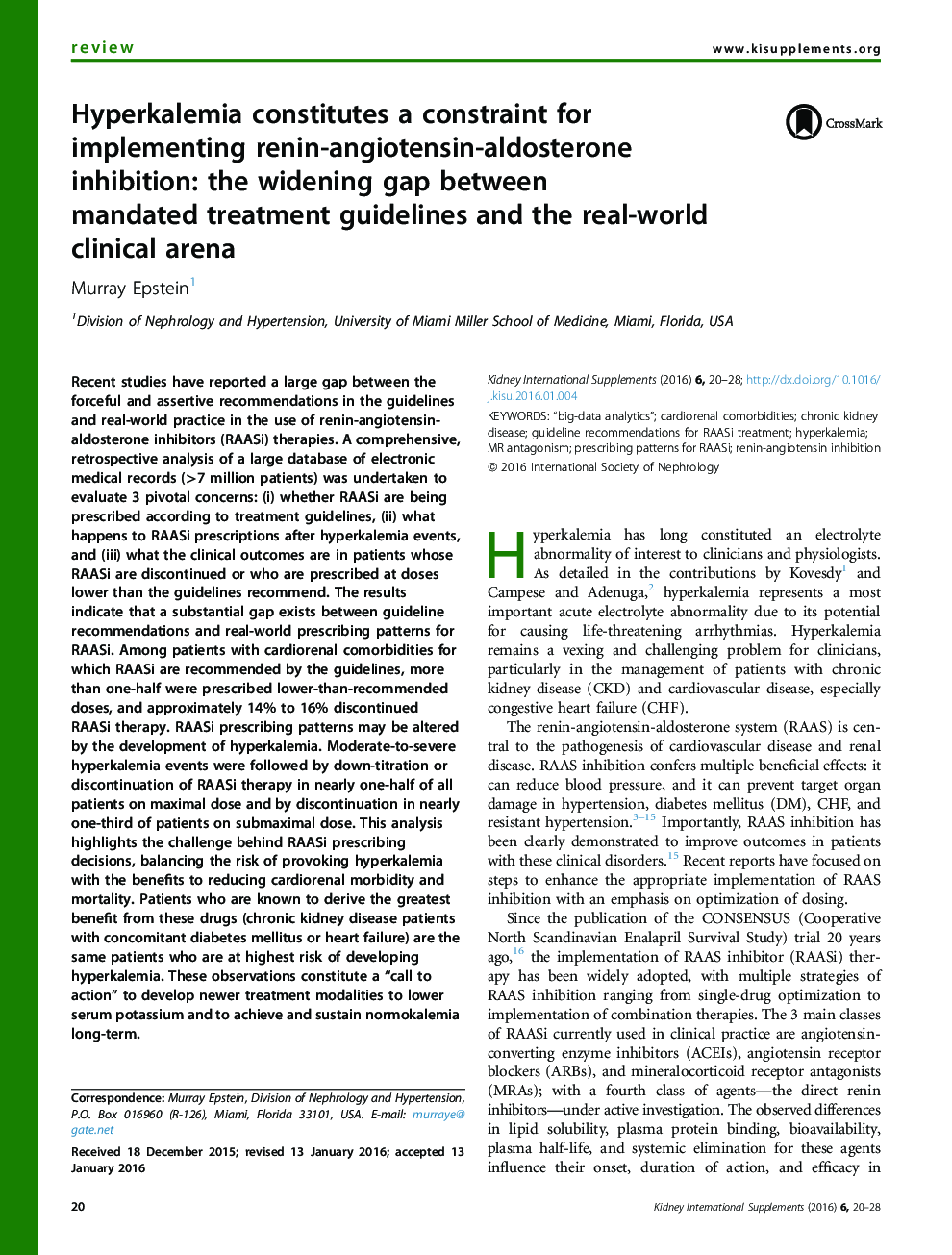| کد مقاله | کد نشریه | سال انتشار | مقاله انگلیسی | نسخه تمام متن |
|---|---|---|---|---|
| 3891965 | 1410038 | 2016 | 9 صفحه PDF | دانلود رایگان |

Recent studies have reported a large gap between the forceful and assertive recommendations in the guidelines and real-world practice in the use of renin-angiotensin-aldosterone inhibitors (RAASi) therapies. A comprehensive, retrospective analysis of a large database of electronic medical records (>7 million patients) was undertaken to evaluate 3 pivotal concerns: (i) whether RAASi are being prescribed according to treatment guidelines, (ii) what happens to RAASi prescriptions after hyperkalemia events, and (iii) what the clinical outcomes are in patients whose RAASi are discontinued or who are prescribed at doses lower than the guidelines recommend. The results indicate that a substantial gap exists between guideline recommendations and real-world prescribing patterns for RAASi. Among patients with cardiorenal comorbidities for which RAASi are recommended by the guidelines, more than one-half were prescribed lower-than-recommended doses, and approximately 14% to 16% discontinued RAASi therapy. RAASi prescribing patterns may be altered by the development of hyperkalemia. Moderate-to-severe hyperkalemia events were followed by down-titration or discontinuation of RAASi therapy in nearly one-half of all patients on maximal dose and by discontinuation in nearly one-third of patients on submaximal dose. This analysis highlights the challenge behind RAASi prescribing decisions, balancing the risk of provoking hyperkalemia with the benefits to reducing cardiorenal morbidity and mortality. Patients who are known to derive the greatest benefit from these drugs (chronic kidney disease patients with concomitant diabetes mellitus or heart failure) are the same patients who are at highest risk of developing hyperkalemia. These observations constitute a “call to action” to develop newer treatment modalities to lower serum potassium and to achieve and sustain normokalemia long-term.
Journal: Kidney International Supplements - Volume 6, Issue 1, April 2016, Pages 20–28